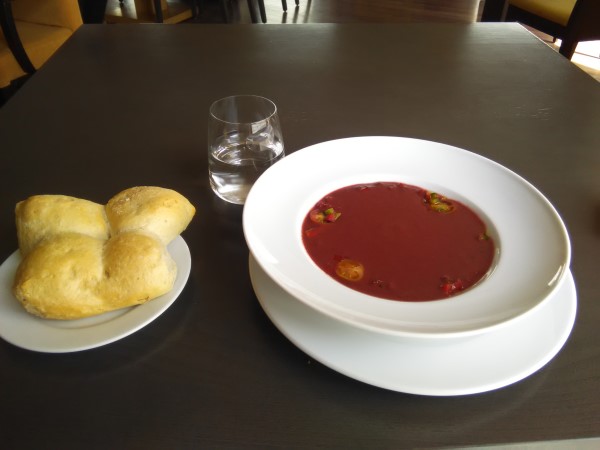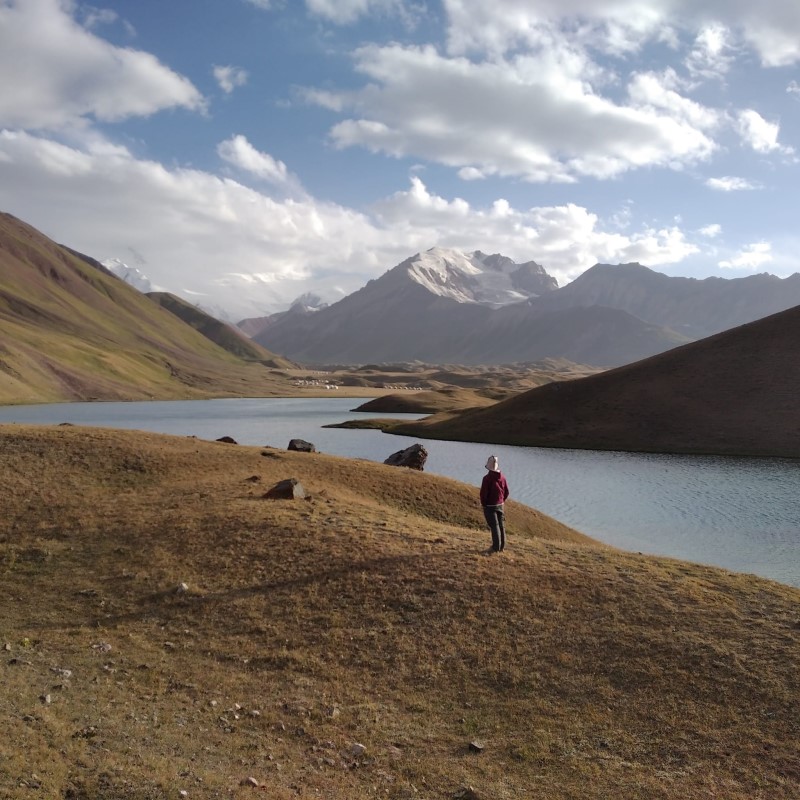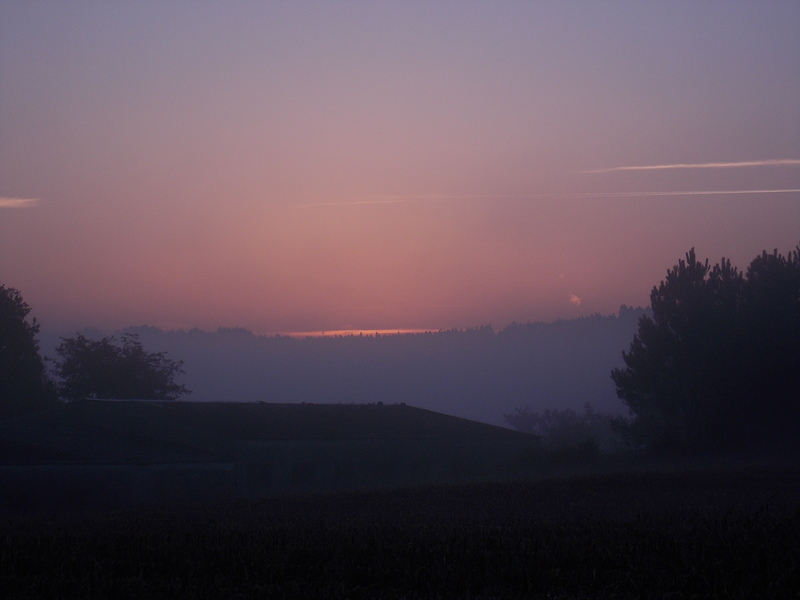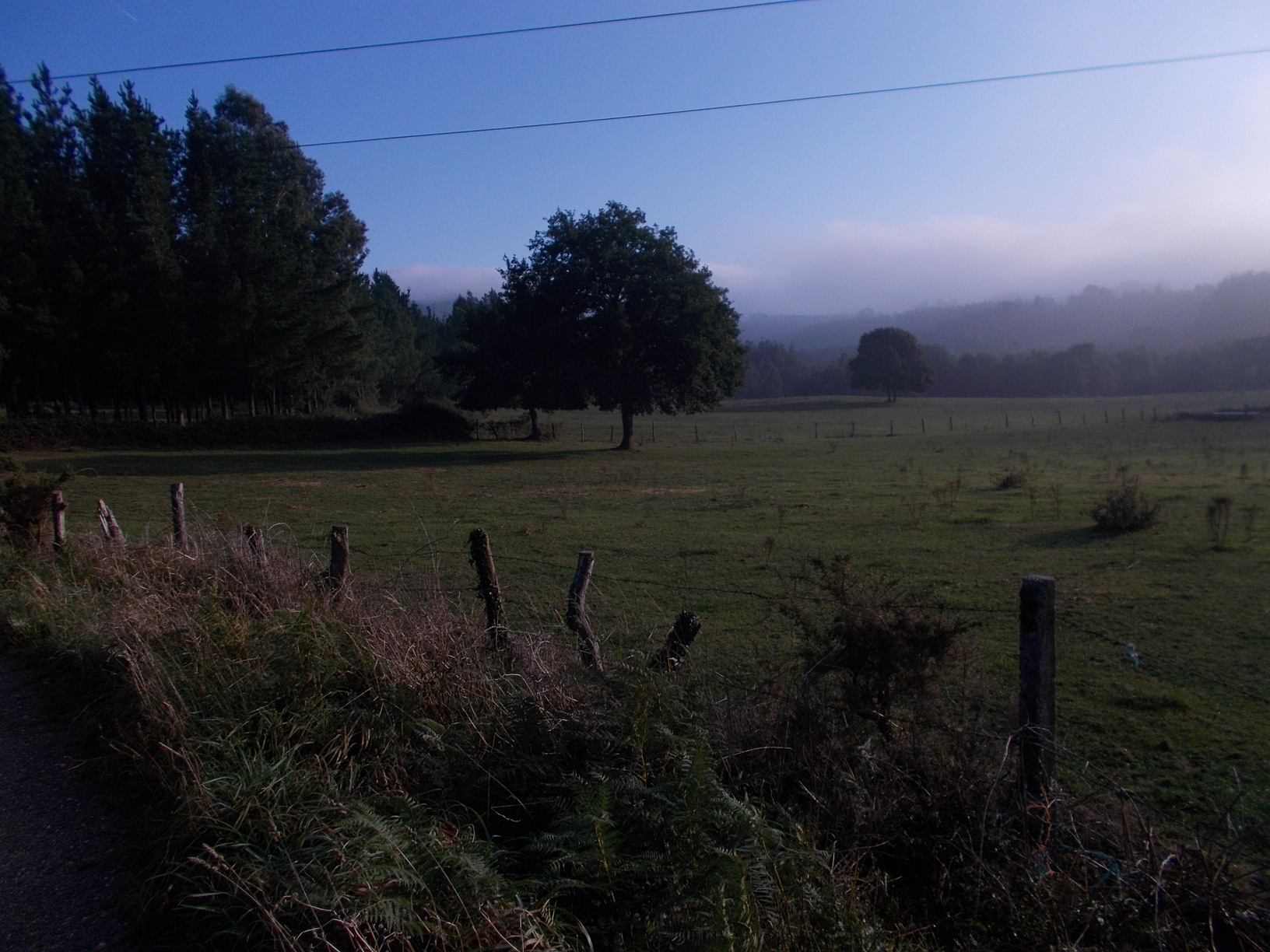Basic Information
- Starting Point: Logroño, Spain – The capital of La Rioja (the province of Spain famous for its wine culture), with of over 150,000 inhabitants, historic old town, and vibrant tapas scene, it offers all services you may expect from a big town. Six pilgrim albergues and many other accommodation options for every budget on the camino.
- Ending Point: Azofra, Spain – A peaceful small village (a nice change after the big city of yesterday) with a historic church, and pilgrim-friendly atmosphere. With only 200 inhabitants, you will still find shop, albergue (with 30 double rooms for pilgrims, a nice change as well after the big rooms with many beds 🙂), restaurant, pharmacy and all basic facilities for pilgrims in the village.
- Availability of an alternative route: No.
- Distance: Main route: 36 km (Download GPS here)
- Online Map: here.
- Elevation Difference: +575 m ascent, -410 m descent
- Difficulty Score: 4/5 (mostly for the length of the stage, the elevation profile or terrain isn’t difficult).
- Beauty Score: 2/5.
- Terrain/Asphalt Walking Ratio: 65% trails, 35% asphalt/paved roads/right next to the road.
- Next stage: Camino Frances Stage no. 9 – Azofra – Granon.
- Previous stage: Camino Frances, Stage no. 7, Los Arcos – Logrono.
Elevation profile for the stage

– We’re really getting close to super flat sections of camino Frances. 80% of today’s walk is either completely flat or with the climb gradient of 1-2% (barely noticeable that you’re actually climbing or descending). In overall though, the stage climbs from 390 meters on km zero to 650 meters on km 21, which is the highest point of today’s walk, and from there on it is mostly downhill or flat. A few small climbs are thrown in-between, just that we do not get bored :).
Advanced Info About the Stage
- Trail Marking: Very good on this stage, no way of getting lost. Pay attention to the sign for a small detour to Ventosa (see special remarks for more details), to make sure you aren’t left without water on this long stage.
- Natural Places Worth Seeing:
- Parque de La Grajera: A beautiful park with a lake, walking paths, and shaded picnic areas. It’s a perfect spot for a peaceful break. The place is a home for a big community of red squirrels, something that will cheer you up during this long day. Definitely worth a stop on your walk. There are paths in both directions around the lake, with some beautiful views… Location on Google maps here.
- Some of the finest vineyards of La Rioja: The trail passes through some of La Rioja’s most famous vineyards, with red-colored soil that looks just spectacular in the morning light. What’s more, if you’re lucky to be here in September, you may witness the workers picking grapes. Feel free to ask for some, Spanish people are always happy to share 🙂
- Historical, Architectural, and Culinary Places Worth Seeing:
- Ruins of ancient pilgrim hospital, San Juan de Acre: Remains of an ancient pilgrim hospital and church, dating back to 12th century. An interesting reminder of what the camino once was. Considering the condition of most ancient pilgrim hospitals on the Camino, this one is pretty decently preserved. Right on the camino, you cannot really miss it. Location on Google maps here.
- Iglesia de la Asunción (Navarrete): A historic church in Navarrete, known for its beautiful Baroque altarpiece, but not only for it. Open every day from 9m to 8:30pm, and in my opinion one of the nicest church interiors you can see on the entire Camino Frances. Free entry. Location on Google maps here.
- Monastery of Santa Maria de Real (Najera): A beautiful monastery from the 16th century, worth seeing from both outside and inside. The entrance is 4 euros (pilgrim discount), and you can get an audio guide in English. Open every day except of Monday, from 10am to 1:30pm and then from 4pm to 5:30pm (that’s the time when pilgrims sleeping in Najera typically visit the place). Location on Google maps here. A pro tip: There is a path close to the monastery leading to the ruins of the castle on the hill, exactly here. It is a quiet place with beautiful views over town and the surrounding landscape. The hike is about 1 kilometer long, and I mapped it for you, right from the monastery. You can see the route here.
- Camping/Bivouac Options on the Stage: There is one organized camping place, close to the town of Navarrete (km 13 of today’s walk), called Caming Navarrete. 2 km detour from the camino, location and reviews on Google maps here. It isn’t the best camping, and they do not allow dogs, but it isn’t bad either (has swimming pool, restaurant and everything), and if you’re into camping on this stage of the camino, it will do for one night. From their website it isn’t clear what months of the year they are open, so you better call in advance (if you’re walking rather off season) to make sure the place is open. When it comes to wild-camping, your best bet is definitely the place with the ruins of the castle above Najera (km 30 of today’s walk), somewhere here. There are some trees and also even ground, places to hide with the tent, and at the same time you’re close to the town.
- Dog-Friendly Score: 3/5. While quite flat and with open landscapes, this stage isn’t entirely bad for dogs. You walk mostly on trails, have one water reservoir and a couple of river crossings, and also some shaded spots. At the same time, however, if you’re unlucky with the heat the central sections of the stage can be quite brutal for dogs… Make sure to start early. The albergue in Azofra does not accept dogs, so your best bet is stopping in Najera (km 30), where one good albergue called Las Penas accepts dogs. Location and reviews on Google maps here.
- Special Remarks:
- The small village of Ventosa (km 20 of today’s walk) is actually outside of the Camino (the detour clearly marked). With only 180 inhabitants, it offers shop, bar, restaurant, and even an albergue for pilgrims. Not taking this detour, you will spend over 15 km on a stretch of camino with no villages and services, from Navarrete to Najera. It is something to consider, and especially in hot weather the small detour is worth making (to spend some time in shade in local bar and to refresh yourself with some beverage).
My picks for accommodation on this stage
- Albergue Las Penas, Najera (km 30): While you won’t find one of those albergues you’ll remember for the rest of your way anywhere on today’s stage, the place Las Penas in Najera is a good option. It has a perfect location (close to the monastery, ruins of the castle, and at the same time in a quiet part of town), the rooms are quite spacious for a pilgrim albergue and everything is very clean. 12 euro/night for a bed, with 3 euro extra for breakfast. It is a small place with 12 beds in total, so better book in advance on one of the following phone numbers: +34 621 209 432, +34 621 209 410. Location and reviews on Google maps here.
- Albergue Peregrino Najerino, Najera (km 30): A nice place with communal dinner, with vegetarian and vegan options. 28 beds in 2 rooms, 15 euro/night, dinner is extra 10 euro. In one room they have bunk beds, in another one individual beds, which is definitely a nice change for one night on the way. Friendly hosts, check-in from noon, definitely a great option. You can see photos and reserve the place directly on Booking, here.
- Albergue de Peregrinos de Azofra (km 36): Located at the end of the stage, this albergue is a nice surprise with 30 double rooms, so you get much more privacy than you’d normally do in a municipal albergue. Good kitchen, small garden, always clean and well maintained. In my opinion the best albergue on today’s stage. Typically municipal albergues do not get such honors, but considering the other places today, this one deserves it. 15 euro/night, 60 beds, open from April to October, check-in from 1:30pm. Location and reviews on Google maps here.
Pictures from the stage
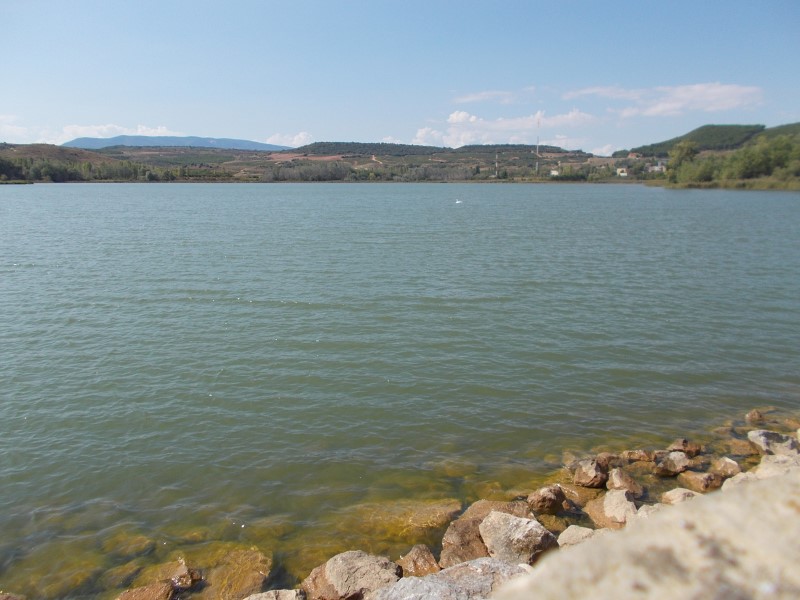 – The water reservoir on today’s walk
– The water reservoir on today’s walk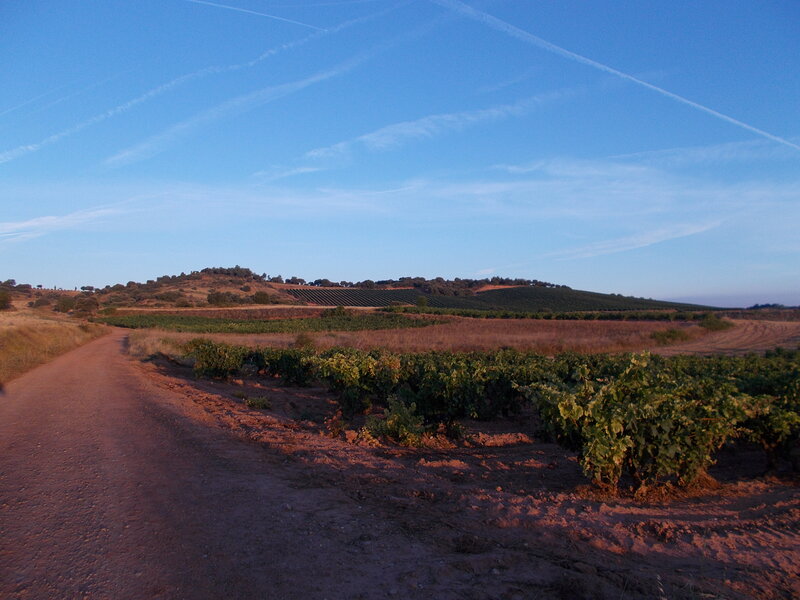 – The beautiful vineyards with red soils, breathtaking in the early morning light.
– The beautiful vineyards with red soils, breathtaking in the early morning light.
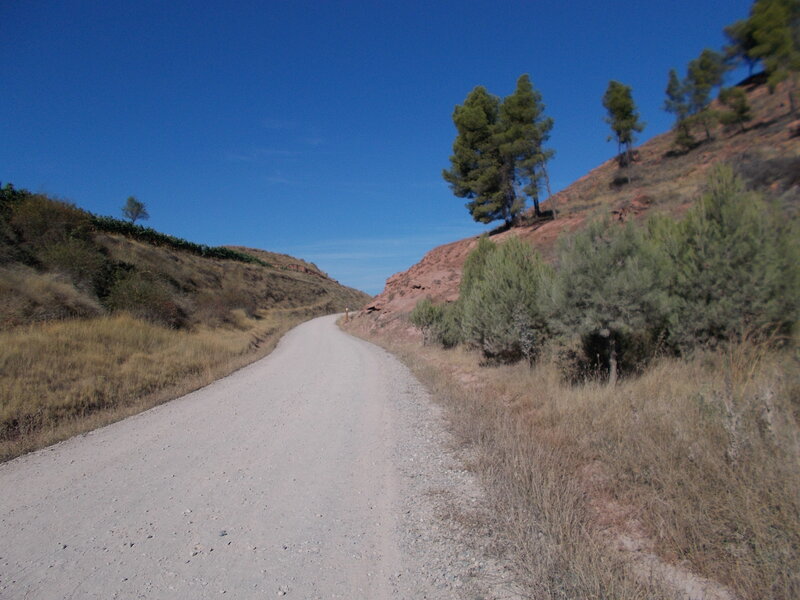 – The middle part of today’s stage follows mostly gravel roads. Notice how dry everything is.
– The middle part of today’s stage follows mostly gravel roads. Notice how dry everything is.
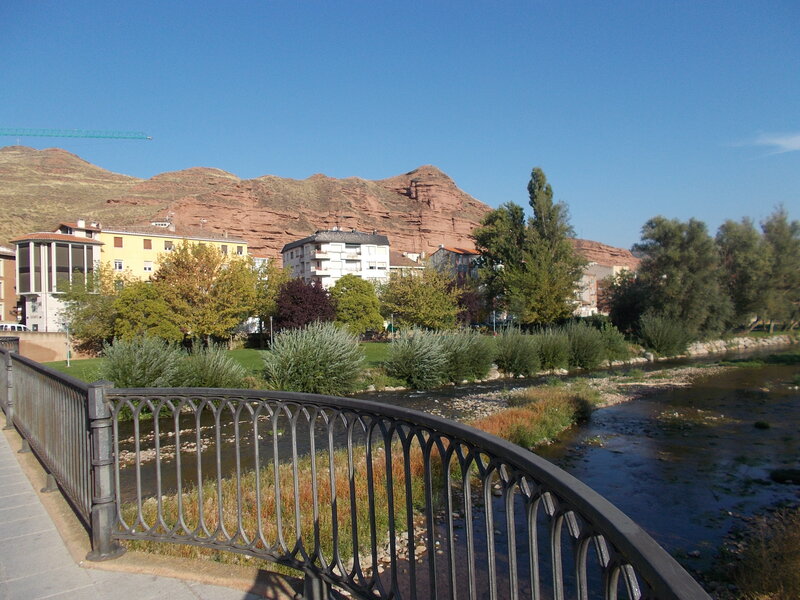 – Crossing the bridge entering the beautiful town of Najera
– Crossing the bridge entering the beautiful town of Najera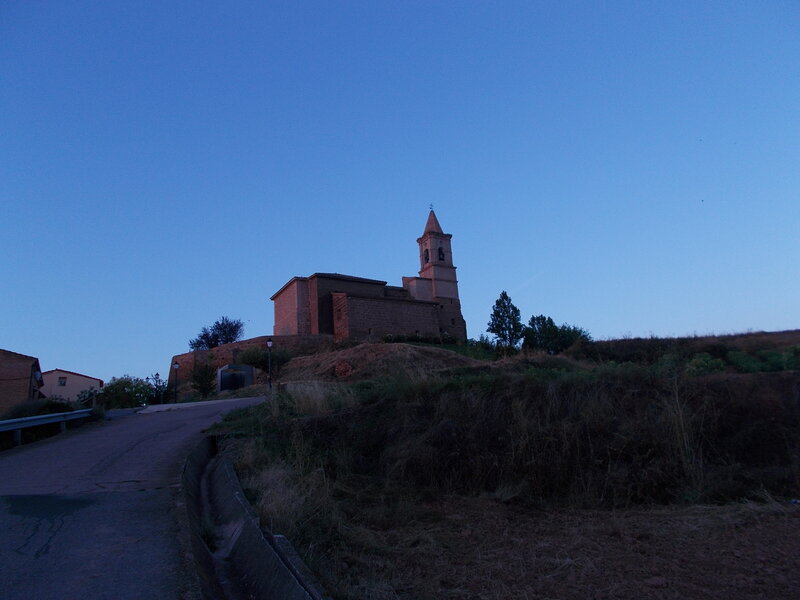 – One of the nice small churches along today’s walk.
– One of the nice small churches along today’s walk.
Few Tips at the End
- Start early if you want to walk all the way to Azofra: While you won’t cover many vertical meters on today’s stage, the afternoon heat can be brutal on open sections, especially between Navarreta and Najera. 36 kilometers of almost flat terrain can be walked in 6 hours by someone in great shape, but don’t rely on such a pace on a hot Spanish day…
- Pause at parque de La Grajera: Take a break at Parque de La Grajera to enjoy the peaceful lake and shaded picnic areas. Nature-wise it is definitely the nicest spot on today’s stage, and with plenty of red squirrels you can’t get wrong making a stop here.
Next/Previous Stage
- Next stage: Camino Frances Stage no. 9 – Azofra – Granon.
- Previous stage: Camino Frances, Stage no. 7, Los Arcos – Logrono.

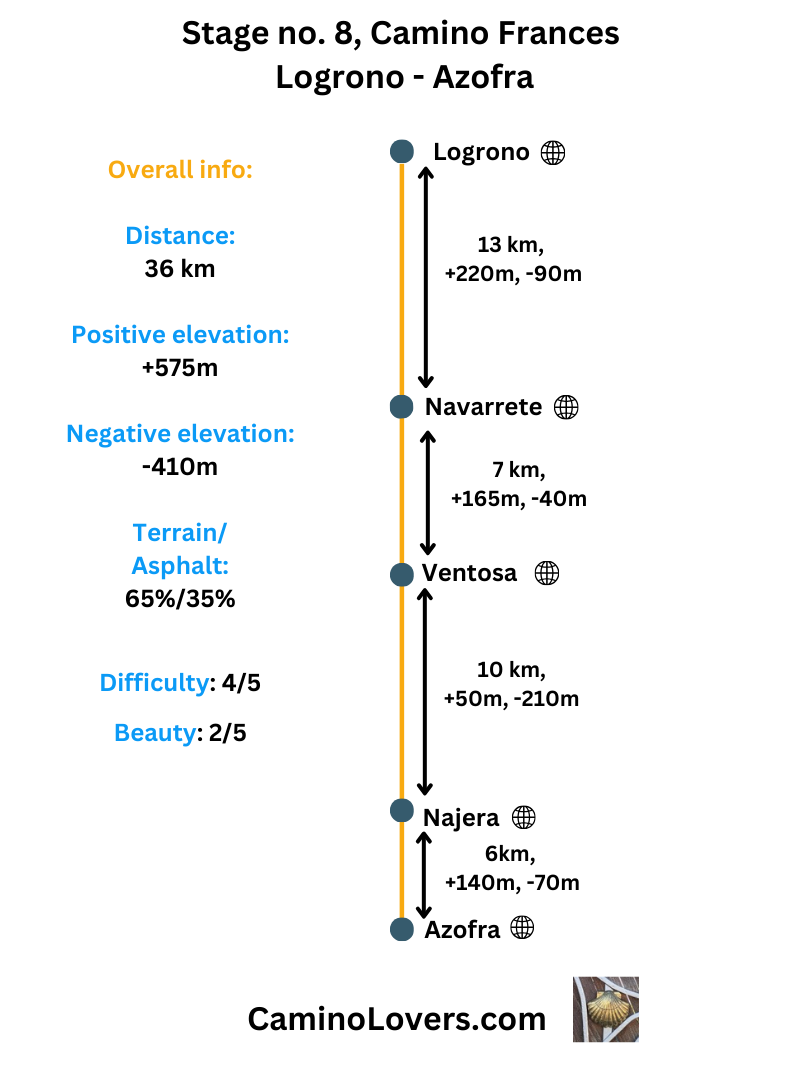


![Ultralight Packing List for Camino de Santiago [2025 Edition]](https://caminolovers.com/wp-content/uploads/2022/03/altra-shoes-640-x-480.jpg)
